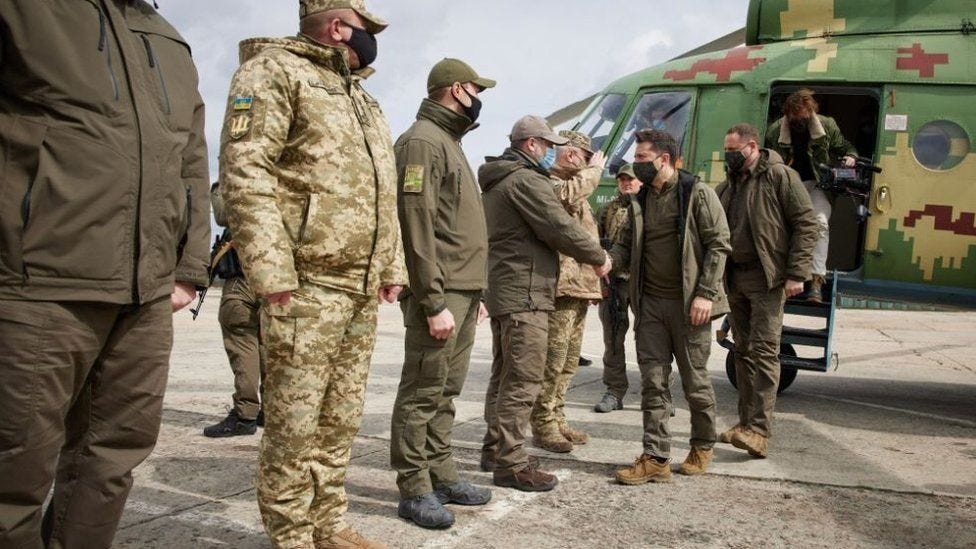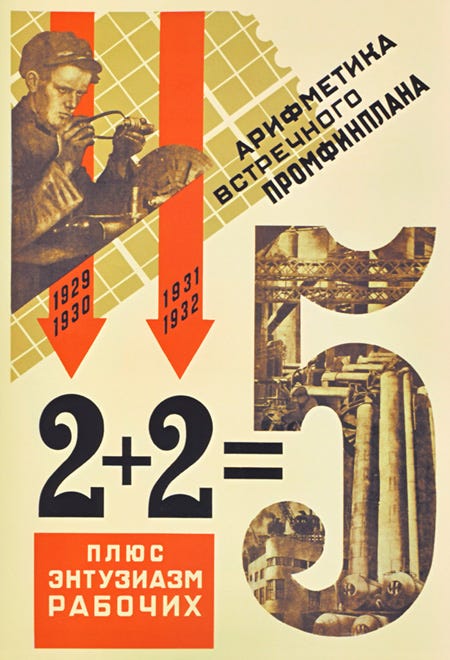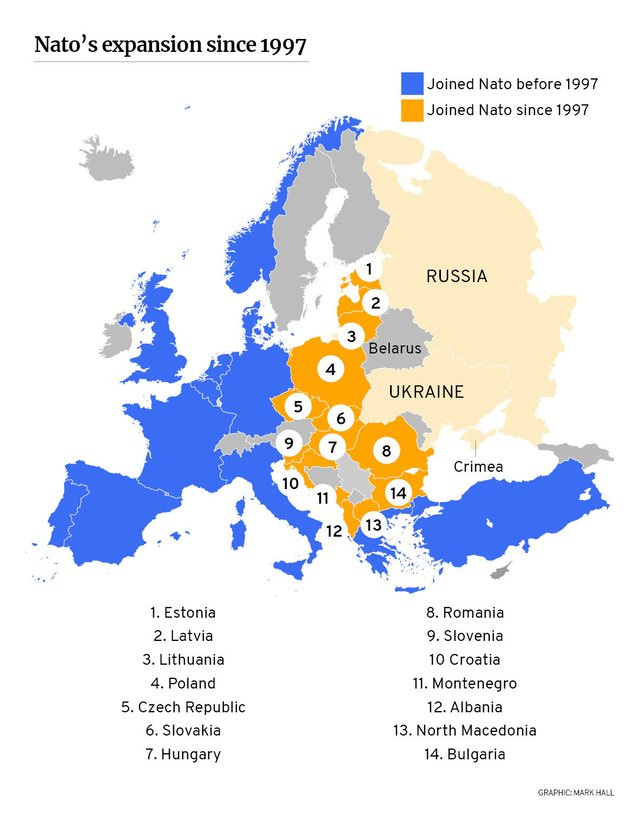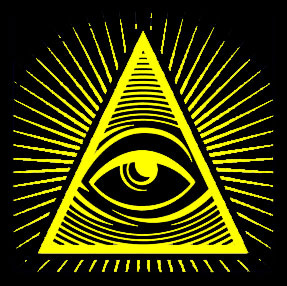When President Joe Biden and his allies in NATO began ratcheting up panic about a possible Russian invasion of Ukraine, I must say, things just didn’t add up to me. After all, Russia invaded Crimea in 2014 without sparking talk of World War III. Crimean flags didn’t suddenly appear all over social media.
And if Russian President Vladimir Putin had wanted to invade and annex Ukraine, he had four years to do so with a pat on the back from Donald Trump.
Why were we suddenly seeing global panic? What had changed the calculus?
False flag intel
On Jan.14, the Pentagon claimed to have intelligence indicating that Russia was planning an invasion of Ukraine. “We have information that they pre-positioned a group of operatives to conduct what we call a false flag operation — an operation designed to look like an attack on them or their people or Russian speaking people in Ukraine, again, as an excuse to go in,” Pentagon spokesman John Kirby said at a press conference.
The announcement came just hours after the Ukrainian government declared a “massive cyber attack” had compromised multiple government websites. The unknown hackers reportedly left messages warning the Ukrainian public to “prepare for the worst.”
Concerns about Russia amassing troops along the Ukrainian border actually began early in Biden’s presidency. On April 8, 2021, the White House claimed Russia had more muscle on Ukraine’s eastern border than at any time since it annexed Crimea, and warned of “Russian aggressions.” Nonetheless, not a word about Ukraine was reported from Biden’s June summit with Putin in Geneva.

Russian troop movements along the Ukrainian border seemed to slip off the radar until two months ago. Now they were being framed in terms of a Russian covert operation, complete with Biden sharing Pentagon intelligence with the world.
The false flag operation claim continued to pop up into February. The Pentagon announced its latest intel on Feb. 3 – Russia might produce a “very graphic propaganda video” of a fake attack by Ukrainian military or intelligence forces against Russia or Russian-speaking Ukrainians, to justify an invasion.
The video would include “corpses and actors that would be depicting mourners and images of destroyed locations, as well as military equipment at the hands of Ukraine or the West,” Kirby told reporters. “Even to the point where some of this equipment would be made to look like it was Western-supplied-to-Ukraine equipment.”
The same day, in a tense exchange with reporters at the State Department, spokesman Ned Price added, “We don’t know if Russia will necessarily use this or another option in the coming days. We are publicizing it now, however, in order to lay bare the extent of Russia’s destabilizing actions towards Ukraine and to dissuade Russia from continuing this dangerous campaign and ultimately launching a military attack.”
Price – who was castigated by Associated Press reporter Matt Lee for getting into “Alex Jones territory” – said the new intelligence indicated that Russia was not seriously interested in de-escalating the crisis through diplomacy.
Crisis? What Crisis?
In the meantime, Ukrainian President Volodymyr Zelensky seemed calm and collected. If anything, he was irritated at Biden for stoking the fires. He criticized Biden for removing the families of U.S. diplomats from Kyiv and appealed for cooler appraisals of the Russian threat.
An anonymous “senior Ukrainian official” told CNN that Zelensky urged Biden to "calm down the messaging" in a lengthy phone call on Jan. 27, warning of the economic impact of panic. The White House responded that anonymous sources were "leaking falsehoods."
Zelensky distanced himself from CNN’s source but expressed frustration with Biden in an almost 90-minute press conference with foreign journalists the next day. “Because the White House understands that there are risks, they keep articulating this, they keep supporting this theme, this topic, and they make it as acute, as burning as possible. In my opinion, this is a mistake.”
By Feb. 13, when more than a dozen countries urged their citizens to leave Ukraine, Zelensky was still calling for calm and claimed he had not seen convincing U.S. intelligence on the upcoming invasion, predicted for Feb. 16.
“We understand all the risks, we understand that there are risks,” Zelensky said in a live broadcast near Ukraine’s border with Russian-annexed Crimea. “If you, or anyone else, has additional information regarding a 100-percent Russian invasion starting on the 16th, please forward that information to us.”
The full-scale Russian invasion finally commenced Feb. 23, a week later. Putin claimed Ukrainians had attacked Russian separatists. Zelensky urged the country to keep calm and stay at home. “We are working. The army is working,” he said. “The whole sector of defense and security is working."
Zelensky had reasons for confidence. The Ukrainian Army boasts 245,000 active duty personnel with another 220,000 reservists ready to face Russian troops trying to cross the border. They’ve also had, thanks to U.S. intelligence, special-ops training and many months to get their troops in place.
Echoes from Iraq
Zelensky’s caution about U.S. intelligence claims was roundly dismissed as naïve, but echoed the skepticism of Lee of the Associated Press when he grilled the State Department 10 days earlier. After all, the last time the U.S. led the world into the breach, the attack was predicated on intelligence that Saddam Hussein possessed weapons of mass destruction.
“I would like to see some proof that shows that the Russians are doing this,” Lee asked when Price announced that Russia was making a false flag video to justify an invasion – but did not show reporters the video. “I remember WMDs in Iraq … so where is the declassified information other than you coming out here and saying it?”
State Department spokesman Ned Price fends off Associated Press reporter Mike Lee’s request for evidence beyond mere assertions.
I was skeptical about “Alex Jones territory” as well. Deception is part of intelligence tradecraft. The Senate Intelligence Committee spent years investigating how President George W. Bush’s claims that Hussein was building nuclear weapons could be so wrong.
“In making the case for war, the Administration repeatedly presented intelligence as fact when in reality it was unsubstantiated, contradicted, or even non-existent,” committee chair Sen. Jay Rockefeller stated in 2008. “As a result, the American people were led to believe that the threat from Iraq was much greater than actually existed.”
So, Pentagon intelligence claimed Russia was cooking up a false flag operation. The plan was to stage an attack on Russian-speaking separatists and make it look like Ukrainian aggression. Putin denied the accusations – but neither he nor Biden provided any evidence.
Biden insisted that going public with the false-flag intelligence was designed to expose Putin’s plan and maybe stop him from invading. Putin insisted Biden was hiding Ukrainian aggression and ignoring Russian security concerns about NATO’s expansion into Eastern Europe.
Was the U.S. wrapping a CIA false flag operation in a Russian flag? On Jan. 13 – the day before the Pentagon put Russian troop movements back on everyone’s radar – Yahoo News reported that the CIA has been secretly training Ukrainian special operations forces at an undisclosed U.S. facility since 2015. Reporter Zach Dorfman’s sources were “five former intelligence and national security officials familiar with the initiative.”
“The United States is training an insurgency,” a former CIA official was quoted as saying, adding that the program includes teaching Ukrainians how “to kill Russians.”
The day after Russian forces actually entered Ukraine, Dorfman reported that U.S. paramilitary trainers had specifically focused on operations around the Ukrainian city of Mariupol, an important port near the separatist Donetsk People's Republic.
My impression has been that NATO has been just as hell-bent on this war as Putin. In December, when Putin demanded “legal guarantees” that NATO stop expanding eastward, he was soundly rebuffed by Secretary General Jens Stoltenberg. Biden joined in taking any talk of Ukraine’s NATO status off the table, just as Zelensky has refused to talk about letting the Donetsk and Luhansk regions secede from Ukraine.
Nobody, including Putin, wants to budge.
One thing nobody disputes is the eastward expansion of NATO. It was formed by 12 Allies in the wake of World War II for “countering the threat posed at the time by the Soviet Union,” according to its website. When the Soviet Union disintegrated in 1991, NATO did not retire – on the contrary, it set out to recruit the former Communist Bloc countries.
NATO now boasts 30 members, including Czech Republic, Hungary, Poland, Bulgaria, Estonia, Latvia, Lithuania, Romania, Slovakia and Slovenia. Ballistic missiles were installed in Poland and Romania, and troops were deployed in Afghanistan and Iraq.
If Putin’s narrative – Russian security requires a buffer zone against NATO – is false, there are plenty of other equations being floated out there.
1. Putin is pursuing the glorious rebirth of the Russian empire.
2. The U.S. military-industrial complex needs a new enemy after withdrawing from Afghanistan.
3. The almost-certified Nord Stream 2 pipeline will deliver gas directly to Germany, cementing relations with Russia and bypassing Ukraine as a key gas transit route.
4. Presidents always boost flagging approval ratings by launching a war.
5. Ukraine is a corrupt, autocratic country that has made the Biden family rich.
6. The U.S. is demonizing Putin to promote a liberal agenda around transgender rights in Eastern Europe.
Was the CIA involved in training neo-Nazi “volunteer militias” or false flag operations in the Donbas region? Did Russian-speaking separatists or KGB agents conduct false flags? Was Putin lured into a war that might end his political career? Was Biden? What is the extent of Biden family financial interests in Ukraine? Will Ukraine easily repel the Russians or will this be the next long occupation?
Finding a narrative that is corroborated by multiple, credible sources in still difficult with a breaking news story like the invasion of Ukraine. We need more facts, not more theories.
When things don’t add up, you need to get the right numbers.






